- Administrator
- Albums and Singles
Summersteps
 How about Psychatrone Rhonedakk? A trio of contributions from well-known artists Low, Bright Eyes and Thurston Moore kept the record from being completely obscure, even though it was largely pointless and also somewhat tasteless. It must have worked out for Summersteps, however, as they have recently released a follow-up entitled Down in a Mirror, the title again drawn from Jandek's back catalog of mysterious song titles. This time around, Summersteps were able to recruit a few more big names—Jeff Tweedy, Six Organs of Admittance, The Mountain Goats and Kawabata Makoto, among others, to tackle their favorite Janky song. As critical and popular assessment of Jandek moves away from the "weirdo banging on untuned guitar" school of thought, into more well-considered and less hyperbolic territories, so too Jandek cover versions seem to become increasingly saner. For the most part, the artists on Down in a Mirror attempt to locate the songwriter that lies at the heart of the Corwood enigma, peeling away layers of muddy reverb and tape noise, simplifying and streamlining the often shambolic guitar work, to reveal the pop songs at the heart of Jandek's best songs. Sometimes this approach works, as in Okkervil River's version of the relentlessly miserable "Your Other Man" (from Blue Corpse), which turns the song into a chillingly effective alt-country excursion, singer Will Sheff retaining just enough of Jandek's haunted meander to remind me of the source. Six Organs of Admittance's Ben Chasny is well suited to cover "I'll Sit Alone and Think a Lot About You," his beautiful acoustic fingerstyle lending an emotional purity that remains true to the original. Much less successful are retarded retreads of Jandek novelties like "You Painted Your Teeth" and "European Jewel," which seem to have been performed and recorded mostly as a gag. AMT's Kawabata Makoto turns "Babe I Love You" (the rare instance of a poppy Jandek song) into a low-fidelity backwards Jajouka drone, which is interesting but utterly off-topic. Wilco's Jeff Tweedy and The Mountain Goats show more respect to the source material, but their contributions are unremarkable apart from their competence. Lewis & Clarke successfully remove almost everything from "Nancy Sings" that made the original so haunting and lovely, and other artists barely even register enough to talk about them. On the whole, Down in a Mirror is plagued with the same problems that most tribute albums suffer from; a dearth of ideas, and tepid interpretations that just make me want to dig out the originals and listen to them instead.
How about Psychatrone Rhonedakk? A trio of contributions from well-known artists Low, Bright Eyes and Thurston Moore kept the record from being completely obscure, even though it was largely pointless and also somewhat tasteless. It must have worked out for Summersteps, however, as they have recently released a follow-up entitled Down in a Mirror, the title again drawn from Jandek's back catalog of mysterious song titles. This time around, Summersteps were able to recruit a few more big names—Jeff Tweedy, Six Organs of Admittance, The Mountain Goats and Kawabata Makoto, among others, to tackle their favorite Janky song. As critical and popular assessment of Jandek moves away from the "weirdo banging on untuned guitar" school of thought, into more well-considered and less hyperbolic territories, so too Jandek cover versions seem to become increasingly saner. For the most part, the artists on Down in a Mirror attempt to locate the songwriter that lies at the heart of the Corwood enigma, peeling away layers of muddy reverb and tape noise, simplifying and streamlining the often shambolic guitar work, to reveal the pop songs at the heart of Jandek's best songs. Sometimes this approach works, as in Okkervil River's version of the relentlessly miserable "Your Other Man" (from Blue Corpse), which turns the song into a chillingly effective alt-country excursion, singer Will Sheff retaining just enough of Jandek's haunted meander to remind me of the source. Six Organs of Admittance's Ben Chasny is well suited to cover "I'll Sit Alone and Think a Lot About You," his beautiful acoustic fingerstyle lending an emotional purity that remains true to the original. Much less successful are retarded retreads of Jandek novelties like "You Painted Your Teeth" and "European Jewel," which seem to have been performed and recorded mostly as a gag. AMT's Kawabata Makoto turns "Babe I Love You" (the rare instance of a poppy Jandek song) into a low-fidelity backwards Jajouka drone, which is interesting but utterly off-topic. Wilco's Jeff Tweedy and The Mountain Goats show more respect to the source material, but their contributions are unremarkable apart from their competence. Lewis & Clarke successfully remove almost everything from "Nancy Sings" that made the original so haunting and lovely, and other artists barely even register enough to talk about them. On the whole, Down in a Mirror is plagued with the same problems that most tribute albums suffer from; a dearth of ideas, and tepid interpretations that just make me want to dig out the originals and listen to them instead. samples:
- Okkervil River - Your Other Man
- Six Organs of Admittance - I'll Sit Alone and Think a Lot About You
- Kawabata Makoto - Babe I Love You
Read More
- Administrator
- Albums and Singles
Important
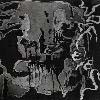 Vocals break through the sound but for the most part they areunintelligible as they are lost in the crushing mix. The A side is theconcert in full and the B side is a bonus track with a catch. There isa massive etching of a bird being stabbed on the B side which cutsthrough most of the grooves making them unplayable to anyone whorespects their needle. Some of the grooves were a pleasant surprise, asthey were safe to play and consisted of high pitched feedback and lowrumblings. For a fan of noise, I find it heard to find fault with thisrecord. Fuck the Old Miamiis much heavier than Wolf Eyes' studio output. My only problems arethat the concert recording is only of good bootleg quality and that thequality of the vinyl used is quite poor. The poor quality of the vinylis necessary for the etching so I'm conflicted on that aspect.Furthermore, I'm sure Wolf Eyes have as part of their mission statementthat degradation from repeated playing will add more layers to the mix.The noise to fault ratio more than makes up for Fuck the Old Miami'sminor foibles. - John Kealy
Vocals break through the sound but for the most part they areunintelligible as they are lost in the crushing mix. The A side is theconcert in full and the B side is a bonus track with a catch. There isa massive etching of a bird being stabbed on the B side which cutsthrough most of the grooves making them unplayable to anyone whorespects their needle. Some of the grooves were a pleasant surprise, asthey were safe to play and consisted of high pitched feedback and lowrumblings. For a fan of noise, I find it heard to find fault with thisrecord. Fuck the Old Miamiis much heavier than Wolf Eyes' studio output. My only problems arethat the concert recording is only of good bootleg quality and that thequality of the vinyl used is quite poor. The poor quality of the vinylis necessary for the etching so I'm conflicted on that aspect.Furthermore, I'm sure Wolf Eyes have as part of their mission statementthat degradation from repeated playing will add more layers to the mix.The noise to fault ratio more than makes up for Fuck the Old Miami'sminor foibles. - John Kealysamples:
Read More
- Andrew Culler
- Albums and Singles
Headz
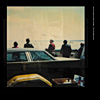 Reviews necessarily focus on themany divergences of Grubbs' musical life, and they are correct innoticing that an awareness of the many sides to this round figure isoften the single best lens through which to view a new work. Hisoutput, however overwhelming, benefits from an audience willing andexpecting the continuation, however sluggish, of a vocabulary of soundand image exposing a dramatically under-populated zone of Americana, awashed-out, post-modern collage of homemade minimalism, smart-boy punkwit, and veil of conceptual presentation. Expectations can be a bitch,though, and it's hard sometimes to reconcile looking for immediatecontextual adherence and hearing something new with each release. Thesame is true in reverse, when the music allows no continuingcommunication, but only a reminder of past windfalls. The release Ifind myself returning to these days is a Loren Connors collab., Arborvitae,where Grubbs charged the guitarist's shrub desert of blues scavengesand feedback slivers with the plaintive, deliberate piano of a Europeanmodernist. In comparison Grubbs' new collab. with Nikos Veliotis, The Harmless Dust,doesn't offer anything new, at least within the first of its side-longtracks. Veliotis, the cellist during Grubbs' most recent tour, createsa tilting, layered drone of long notes, segmented by the returnedpiano, though Grubbs' playing seems lazy, even given the nature of thepiece. His chords are dull; their procession does not take up anyprogressive interval; they are almost superfluous here, where withConnors they were brilliant counterpoint. For the other, longer track,Veliotis changes to E-bowed piano, Grubbs to Hammond organ, and thisinstrument might alone be capable of redeeming the record, at least forfans of the drone. I could listen to a Hammond organ drone on forhours; Grubbs gives 24 minutes of coaxed note-holds and releases: slabsof waxy warm noise to which Veliotis' very un-piano constancies occupya background of enigmatic stillness. Grubbs' changes emerge now withclicking and shuddering physicality that surprises since the firsttrack's anxious momentum has subsided. The music of this second partsyncs well with Veliotis' beautiful sleeve design of oxidized andcollaged old photos detailing a forgotten family history in middleAmerica or someplace like it. Unfortunately, the gorgeous design,typical of the Headz label, can't compensate for the music's failure toopen any new vistas in Grubbs' career, and though enjoyable, gooddrones are far too prevalent for me to be excited by this one.
Reviews necessarily focus on themany divergences of Grubbs' musical life, and they are correct innoticing that an awareness of the many sides to this round figure isoften the single best lens through which to view a new work. Hisoutput, however overwhelming, benefits from an audience willing andexpecting the continuation, however sluggish, of a vocabulary of soundand image exposing a dramatically under-populated zone of Americana, awashed-out, post-modern collage of homemade minimalism, smart-boy punkwit, and veil of conceptual presentation. Expectations can be a bitch,though, and it's hard sometimes to reconcile looking for immediatecontextual adherence and hearing something new with each release. Thesame is true in reverse, when the music allows no continuingcommunication, but only a reminder of past windfalls. The release Ifind myself returning to these days is a Loren Connors collab., Arborvitae,where Grubbs charged the guitarist's shrub desert of blues scavengesand feedback slivers with the plaintive, deliberate piano of a Europeanmodernist. In comparison Grubbs' new collab. with Nikos Veliotis, The Harmless Dust,doesn't offer anything new, at least within the first of its side-longtracks. Veliotis, the cellist during Grubbs' most recent tour, createsa tilting, layered drone of long notes, segmented by the returnedpiano, though Grubbs' playing seems lazy, even given the nature of thepiece. His chords are dull; their procession does not take up anyprogressive interval; they are almost superfluous here, where withConnors they were brilliant counterpoint. For the other, longer track,Veliotis changes to E-bowed piano, Grubbs to Hammond organ, and thisinstrument might alone be capable of redeeming the record, at least forfans of the drone. I could listen to a Hammond organ drone on forhours; Grubbs gives 24 minutes of coaxed note-holds and releases: slabsof waxy warm noise to which Veliotis' very un-piano constancies occupya background of enigmatic stillness. Grubbs' changes emerge now withclicking and shuddering physicality that surprises since the firsttrack's anxious momentum has subsided. The music of this second partsyncs well with Veliotis' beautiful sleeve design of oxidized andcollaged old photos detailing a forgotten family history in middleAmerica or someplace like it. Unfortunately, the gorgeous design,typical of the Headz label, can't compensate for the music's failure toopen any new vistas in Grubbs' career, and though enjoyable, gooddrones are far too prevalent for me to be excited by this one.samples:
- The Harmless Dust, Pt. One
- The Harmless Dust, Pt. Two [excerpt 1]
- The Harmless Dust, Pt. Two [excerpt 2]
Read More
- Administrator
- Albums and Singles
Hydrogen Dukebox
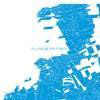 Plus, the sterile nature of this style of music isremoved thanks to addition of cello by Julia Kent and vocals by ConniePetruk that are very reminiscent of Bilinda Butcher. While this couldvery easily go wrong and end up sounding like something played in thebackground of clothes shop, Plumbline keeps it on track for most of thealbum. Unfortunately, towards the end of Pin Points there is anoticeable drop in the quality of the music. Thomas seemed to have runout of ideas and instead of stopping the album at an earlier point hegoes on to regurgitate the first few tracks and of course,regurgitation is too close to vomiting in terms of keeping upstandards. The penultimate track "811 10A" with its amateurish and lazystructure pales in comparison to the beautifully crafted opener "11E52" with its perfect programming supplemented with some equallyperfect cello. I really have to wonder what went wrong. Luckily, themajority of the album pulls it back on to the side of listenable.Plumbline could have made a classic of an album but instead he hasproduced a good album with a few flawed tracks stuck onto the end.
Plus, the sterile nature of this style of music isremoved thanks to addition of cello by Julia Kent and vocals by ConniePetruk that are very reminiscent of Bilinda Butcher. While this couldvery easily go wrong and end up sounding like something played in thebackground of clothes shop, Plumbline keeps it on track for most of thealbum. Unfortunately, towards the end of Pin Points there is anoticeable drop in the quality of the music. Thomas seemed to have runout of ideas and instead of stopping the album at an earlier point hegoes on to regurgitate the first few tracks and of course,regurgitation is too close to vomiting in terms of keeping upstandards. The penultimate track "811 10A" with its amateurish and lazystructure pales in comparison to the beautifully crafted opener "11E52" with its perfect programming supplemented with some equallyperfect cello. I really have to wonder what went wrong. Luckily, themajority of the album pulls it back on to the side of listenable.Plumbline could have made a classic of an album but instead he hasproduced a good album with a few flawed tracks stuck onto the end.samples:
Read More
- Administrator
- Albums and Singles
Troniks/Pacrec
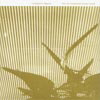 Contagious Orgasm's music is a strong blend of melody, rhythm, sound collage tape manipulation, noise, and textured soundtracks made from a veritable junk heap of sampled oddities and processed performance. From the Irresponsible Country Sounds is a 23 minute EP released in 2004 on the Troniks/Pacrec label and highlights just about every aspect of this group's sound that I've been able to come across. At the center of both songs is a strong hook or a readily identifiable segment that holds all of the stranger sections together and makes them fit seamlessly. "The World of the Pillaged Sound" is marked by a lovely rolling guitar line that flows along as smoothly as a sine wave, but is interrupted by freak-out guitar solos, drum machine percussion, and random bursts of unidentifiable sound and radio interference. At times sounding like a cartoon gone horribly wrong, Contagious Orgasm are also capable of astounding beauty. The music manages to take on emotional aspects after repeated listens and, not long after that, the music begins to sound like its detailing some strange narrative that only the most subterranean individuals could relate. Both songs are elegant and hypnotic works of music, noise, and perfectly arranged sound experimentation. There are other artists who have worked on this level before, one particular Nurse comes to mind immediately, but I've not heard another group play on that palette before and come up with such unique and enjoyable songs.
Contagious Orgasm's music is a strong blend of melody, rhythm, sound collage tape manipulation, noise, and textured soundtracks made from a veritable junk heap of sampled oddities and processed performance. From the Irresponsible Country Sounds is a 23 minute EP released in 2004 on the Troniks/Pacrec label and highlights just about every aspect of this group's sound that I've been able to come across. At the center of both songs is a strong hook or a readily identifiable segment that holds all of the stranger sections together and makes them fit seamlessly. "The World of the Pillaged Sound" is marked by a lovely rolling guitar line that flows along as smoothly as a sine wave, but is interrupted by freak-out guitar solos, drum machine percussion, and random bursts of unidentifiable sound and radio interference. At times sounding like a cartoon gone horribly wrong, Contagious Orgasm are also capable of astounding beauty. The music manages to take on emotional aspects after repeated listens and, not long after that, the music begins to sound like its detailing some strange narrative that only the most subterranean individuals could relate. Both songs are elegant and hypnotic works of music, noise, and perfectly arranged sound experimentation. There are other artists who have worked on this level before, one particular Nurse comes to mind immediately, but I've not heard another group play on that palette before and come up with such unique and enjoyable songs. samples:
Read More
- Jonathan Dean
- Albums and Singles
Zum
 To my ears, Growing share littleor nothing in common with the aforementioned acts. Their brand of droneis clean and polished, harmonically precise, thick, substantial andevocative; not noisy, chaotic or unstructured, and not matched withpseudo-metal aesthetic trappings. It shares much more in common withcertain avant-garde explorers of the drone (LaMonte Young, Tony Conrad,Terry Riley), or even a bit like Nurse With Wound's elegiac dronemasterpiece Soliloquy for Lilith. This long-delayed split CDdrives home my point. Growing's contribution, a 19-minute pieceentitled "Firmament," is not doom-y, funereal, earthbound or dirge-y inthe slightest; it's a hypnotically beautiful ambient work combiningguitar and bass harmonics with limited electronic elements formulatedto lift the listener into a heavenly firmament of clouds. The slow,unfocused drones buzz, vibrate and harmonize at unexpected moments tosuggest a kind of lazy melody, slowly smearing out cumulonimbus cloudson the crystal blue horizon. The technical precision with which Growingrecord and produce their music is stunning; at high volumes played onspeakers, the piece takes on quadraphonic qualities, as the lowerfrequencies vibrate random items in the room, creating another level ofphysical immersion. Sharing this disc with Growing is a solo piece fromMark Evan Burden, who some may know from his involvement in Get Hustleand Glass Candy, or his solo work as Silentist. His piece "10.24.02" isan avant-garde compositional piece for piano, percussion andelectronics. The press notes compare this piece to Cage, Ligeti andConlon Nancarrow, none of which I'm terribly familiar with, so I amwithout a real reference point for this music. For thenon-academically-minded such as myself, the piece still holds a lot ofinterest, with an intense, energetic performance by Burden on piano,locking himself into complex grooves which grow in complexity with eachrepetition as treble-heavy electronic tones bubble up and take over theforeground. The piece slowly develops over its 15-minute length,traveling through several movements, increasing echo and reverb untilthe piano blends together with the electronics in a nebulous andsuggestive tangle. Though avant-garde piano composition is not usuallya big turn-on for me, I really enjoyed this piece immensely.
To my ears, Growing share littleor nothing in common with the aforementioned acts. Their brand of droneis clean and polished, harmonically precise, thick, substantial andevocative; not noisy, chaotic or unstructured, and not matched withpseudo-metal aesthetic trappings. It shares much more in common withcertain avant-garde explorers of the drone (LaMonte Young, Tony Conrad,Terry Riley), or even a bit like Nurse With Wound's elegiac dronemasterpiece Soliloquy for Lilith. This long-delayed split CDdrives home my point. Growing's contribution, a 19-minute pieceentitled "Firmament," is not doom-y, funereal, earthbound or dirge-y inthe slightest; it's a hypnotically beautiful ambient work combiningguitar and bass harmonics with limited electronic elements formulatedto lift the listener into a heavenly firmament of clouds. The slow,unfocused drones buzz, vibrate and harmonize at unexpected moments tosuggest a kind of lazy melody, slowly smearing out cumulonimbus cloudson the crystal blue horizon. The technical precision with which Growingrecord and produce their music is stunning; at high volumes played onspeakers, the piece takes on quadraphonic qualities, as the lowerfrequencies vibrate random items in the room, creating another level ofphysical immersion. Sharing this disc with Growing is a solo piece fromMark Evan Burden, who some may know from his involvement in Get Hustleand Glass Candy, or his solo work as Silentist. His piece "10.24.02" isan avant-garde compositional piece for piano, percussion andelectronics. The press notes compare this piece to Cage, Ligeti andConlon Nancarrow, none of which I'm terribly familiar with, so I amwithout a real reference point for this music. For thenon-academically-minded such as myself, the piece still holds a lot ofinterest, with an intense, energetic performance by Burden on piano,locking himself into complex grooves which grow in complexity with eachrepetition as treble-heavy electronic tones bubble up and take over theforeground. The piece slowly develops over its 15-minute length,traveling through several movements, increasing echo and reverb untilthe piano blends together with the electronics in a nebulous andsuggestive tangle. Though avant-garde piano composition is not usuallya big turn-on for me, I really enjoyed this piece immensely.samples:
Read More
- Chris Roberts
- Albums and Singles
Stones Throw Records
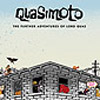 The Unseen used a dizzyingly diverse amalgam of sounds to create its distinct universe; Further Adventurestakes it up a notch. 1980s funk and soul synths, the requisite killerjazz loops so obscure that Madlib probably owns the only extant copy,Bollywood chants and a marvelous collection of "found-sounds":melodramatic snippets from horror flicks and hilariously cheesy 1960sinformational records on "grass" and its effects that nearly make therecord worthwhile all by themselves. Critically speaking, Madlib is"another one of those people" who uses other peoples' music to make hisown. However, his aptitude as a sampler and a remixer makes him able tocreate such creatively distinct brand new music out of the sourcematerial that such detractions sound absurd. On "Bus Ride," his duetingwith an old Melvin Van Peebles routines is as soul-wrenching anddramatic than anything Peebles or Curtis Mayfield (or even StevieWonder!) ever did, and his accompanying back-and-forth verse set a"Strange Piano" makes the snippet his own. The Further Adventures of Lord Quascomes as no surprise to Madlib's followers, whether they came on boardduring the Lootpack era or were Madvillian-era latecomers. To thislongtime Quasimoto crew groupie, The Unseen is better simplybecause of its novelty. Nothing like Quasimoto quite existed in thehip-hop world then, and the same is true today. New listeners, ifopen-minded enough, will delight in finding themselves in the badcharacter's world for the first time.
The Unseen used a dizzyingly diverse amalgam of sounds to create its distinct universe; Further Adventurestakes it up a notch. 1980s funk and soul synths, the requisite killerjazz loops so obscure that Madlib probably owns the only extant copy,Bollywood chants and a marvelous collection of "found-sounds":melodramatic snippets from horror flicks and hilariously cheesy 1960sinformational records on "grass" and its effects that nearly make therecord worthwhile all by themselves. Critically speaking, Madlib is"another one of those people" who uses other peoples' music to make hisown. However, his aptitude as a sampler and a remixer makes him able tocreate such creatively distinct brand new music out of the sourcematerial that such detractions sound absurd. On "Bus Ride," his duetingwith an old Melvin Van Peebles routines is as soul-wrenching anddramatic than anything Peebles or Curtis Mayfield (or even StevieWonder!) ever did, and his accompanying back-and-forth verse set a"Strange Piano" makes the snippet his own. The Further Adventures of Lord Quascomes as no surprise to Madlib's followers, whether they came on boardduring the Lootpack era or were Madvillian-era latecomers. To thislongtime Quasimoto crew groupie, The Unseen is better simplybecause of its novelty. Nothing like Quasimoto quite existed in thehip-hop world then, and the same is true today. New listeners, ifopen-minded enough, will delight in finding themselves in the badcharacter's world for the first time.samples:
Read More
- Jonathan Dean
- Albums and Singles
Scarcelight
 I amfairly certain I never would have made the Beatles connection had thepress notes not informed me of the piece's origins. Flying is a20-minute experimental concept piece broken up into eight differentmovements, each dissecting the original material in a different way,all of them rendering the original totally unrecognizable. Track oneretains the rhythmic structure, where track two creates various layersof throbbing electronic noises in which rhythm is far from a constant.The strictly minimal sound palette and clinical digital productionreminds me at times of a Raster-Noton release, which is frequently nota good sign of musical quality, at least in my opinion. There's nothingbad about the sounds on this mini CD, but it sort of defies any kind ofcritical assessment of its quality, as it is by its nature non-musicaland a bit prickly. There are some interesting moments, such as thesixth track, where alien, reptilian syllables lick forked tongues overa looped vibraphone. These moments are brief and insubstantial,however, and aren't anywhere near as intriguing as releases byBeequeen. I could try to make this sound more interesting by ruminatingon the implicit ideas of digital technology and the decay of the systeminherent in the incipient glitch, but what would be the point? Thoseideas could just as easily apply to a steel wool-scoured CD of the lastGreen Day album, which is not exactly my idea of good music.
I amfairly certain I never would have made the Beatles connection had thepress notes not informed me of the piece's origins. Flying is a20-minute experimental concept piece broken up into eight differentmovements, each dissecting the original material in a different way,all of them rendering the original totally unrecognizable. Track oneretains the rhythmic structure, where track two creates various layersof throbbing electronic noises in which rhythm is far from a constant.The strictly minimal sound palette and clinical digital productionreminds me at times of a Raster-Noton release, which is frequently nota good sign of musical quality, at least in my opinion. There's nothingbad about the sounds on this mini CD, but it sort of defies any kind ofcritical assessment of its quality, as it is by its nature non-musicaland a bit prickly. There are some interesting moments, such as thesixth track, where alien, reptilian syllables lick forked tongues overa looped vibraphone. These moments are brief and insubstantial,however, and aren't anywhere near as intriguing as releases byBeequeen. I could try to make this sound more interesting by ruminatingon the implicit ideas of digital technology and the decay of the systeminherent in the incipient glitch, but what would be the point? Thoseideas could just as easily apply to a steel wool-scoured CD of the lastGreen Day album, which is not exactly my idea of good music. samples:
Read More
- Lucas Schleicher
- Albums and Singles
Chondritic Sound/Pacrec
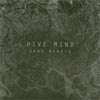 The entire album is a thunderous,38+ minute track that booms and wails with all manner of crisp,textured sounds and open, cavernous poundings that echo like a giantcome to feast on the flesh of the living. Greh's approach on thisearlier record is roughly the same as his approach on Death Tone,but the density of his sound selection and his ability to wieldpressure and release perfectly makes this a far better recording. Thehissing, crawling, concrete sounds that he pulls out of his machinerycrawl at a deadly pace, sneaking through the cracks in the floors andwalls, waiting and growing until the intensity is too great andeverything comes crashing down in a stupendous wave of noise andearth-shaking booms. Imagine a block of granite is being pulverizedslowly by the elements, then imagine that Greh's managed to capture theprocess of its complete disintegration; he's just sped the recording upa bit so that it can be witnessed in a decent amount of time. There'snot a single cheerful moment on this record; its doom-laden soul is onecontinuous march through every destructive tendency imaginable: aconstant grimace that crushes at every twist and turn until I'm leftslumped down in my chair and in need of a break from the bleakness ofit all.
The entire album is a thunderous,38+ minute track that booms and wails with all manner of crisp,textured sounds and open, cavernous poundings that echo like a giantcome to feast on the flesh of the living. Greh's approach on thisearlier record is roughly the same as his approach on Death Tone,but the density of his sound selection and his ability to wieldpressure and release perfectly makes this a far better recording. Thehissing, crawling, concrete sounds that he pulls out of his machinerycrawl at a deadly pace, sneaking through the cracks in the floors andwalls, waiting and growing until the intensity is too great andeverything comes crashing down in a stupendous wave of noise andearth-shaking booms. Imagine a block of granite is being pulverizedslowly by the elements, then imagine that Greh's managed to capture theprocess of its complete disintegration; he's just sped the recording upa bit so that it can be witnessed in a decent amount of time. There'snot a single cheerful moment on this record; its doom-laden soul is onecontinuous march through every destructive tendency imaginable: aconstant grimace that crushes at every twist and turn until I'm leftslumped down in my chair and in need of a break from the bleakness ofit all.samples:
Read More
- Jim Siegel
- Albums and Singles
Ant-Zen
 This music certainly has enough merit to exist separatefrom the live performances the Silk Saw duo of Marc Medea and GabrielSeverin gave during each performance of the play in late 2003 and early2004. The set consists of 11 mostly shorter, chaotic pieces bookendedby two lengthy tracks that are structured around a persistent kick drumpulse. The duo uses layers of various crackling, gurgling andsputtering electronics to achieve a dark, claustrophobic environmentthroughout. As their previous full lengths for Ant-Zen, Preparing Wars and 4th Dividers sounded markedly different from one another, Empty Roomsagain sees them exploring a different approach. Their usual rhythmstake a back seat to noise and atmospheric textures on most of thesetracks, and are instead fragmented or act as pulses. They have clearlybenefitted from the collaborative nature of the project, as it seems tohave forced them to think in a different way. The use of voices fromthe actual play during several tracks adds a human element to whatwould have otherwise sounded like alien material. The two long tracksthat open and close the set—"Konservatorium" and "Einaktiges Stuck"—arethe most rewarding listens. They allow Silk Saw to use one of theirmain strengths, developing layers gradually over 10 or 15 minutes each.Though the ideas explored on some of the shorter tracks are interestingsonically, many of them simply cut off abruptly just as they arebecoming exciting. The synthesizer sirens that cut through the chaoticnoise piling up during "Chor" are prematurely silenced, and thewheezing bursts of analog detritus that make up "Holderlin Und Zimmer"are suddenly stopped before the track reaches three minutes. Perhapsthe nature of the project limited the running time of several of thesepieces. It would have been nice to hear them take a few of these ideasand extend their duration to equal the success of the two long tracks,but as a soundtrack they fulfill a certain functional obligation. Thegesture to include challenging live music in a theatrical context isone that should be applauded. Although this release is an engaginglisten on its own, an accompanying DVD of the performance would havebeen welcome and may have helped toward understanding the larger intentof the project.
This music certainly has enough merit to exist separatefrom the live performances the Silk Saw duo of Marc Medea and GabrielSeverin gave during each performance of the play in late 2003 and early2004. The set consists of 11 mostly shorter, chaotic pieces bookendedby two lengthy tracks that are structured around a persistent kick drumpulse. The duo uses layers of various crackling, gurgling andsputtering electronics to achieve a dark, claustrophobic environmentthroughout. As their previous full lengths for Ant-Zen, Preparing Wars and 4th Dividers sounded markedly different from one another, Empty Roomsagain sees them exploring a different approach. Their usual rhythmstake a back seat to noise and atmospheric textures on most of thesetracks, and are instead fragmented or act as pulses. They have clearlybenefitted from the collaborative nature of the project, as it seems tohave forced them to think in a different way. The use of voices fromthe actual play during several tracks adds a human element to whatwould have otherwise sounded like alien material. The two long tracksthat open and close the set—"Konservatorium" and "Einaktiges Stuck"—arethe most rewarding listens. They allow Silk Saw to use one of theirmain strengths, developing layers gradually over 10 or 15 minutes each.Though the ideas explored on some of the shorter tracks are interestingsonically, many of them simply cut off abruptly just as they arebecoming exciting. The synthesizer sirens that cut through the chaoticnoise piling up during "Chor" are prematurely silenced, and thewheezing bursts of analog detritus that make up "Holderlin Und Zimmer"are suddenly stopped before the track reaches three minutes. Perhapsthe nature of the project limited the running time of several of thesepieces. It would have been nice to hear them take a few of these ideasand extend their duration to equal the success of the two long tracks,but as a soundtrack they fulfill a certain functional obligation. Thegesture to include challenging live music in a theatrical context isone that should be applauded. Although this release is an engaginglisten on its own, an accompanying DVD of the performance would havebeen welcome and may have helped toward understanding the larger intentof the project.samples:
Read More
- Administrator
- Albums and Singles
Koolarrow
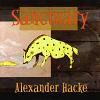 Repeated listenings reveal that the album's lack ofcontinuity is its strong point. It is like a series of audio postcardsfrom Hacke, each one giving a flavor of where he is. The album wasrecorded by Hacke during his travels and an army of guest artists(including J.G. Thirlwell, Andrew Chudy, David Yow and CasparBrötzmann) and the results were assembled into Sanctuary. Thereis no particular style that is common to every track, each one is itsown little microcosm. "Sister" is a mix of swirling guitars surging upduring breaks in the vocal sample taken from a women's self defencetutorial. This is the first point on the album that really captivatedme. The relaxed "Love me love my dog" is a massive shift of pace after"Sister," at this point I found myself being lulled into a cosysanctuary of my own. The title track and "Seven" are where Hacke getsto use all those guitar riffs that don't fit into Neubauten'srepertoire. These more straight-forward rock pieces seemed a little toostandard at first but, as with everything on this album, they laterrevealed some hidden depths. "Per Sempre Butterfly" is the highlight ofthe album and sucked me in straight away. Gianna Nannini's emotiveperformance is inspired and the layers of textured sounds and tabladrumming complement her voice perfectly. Sanctuary touches basewith many styles without sounding too trite or pretentious, however itdoes suffer because of its eclectism. Once I became familiar with thealbum and knew what to expect it clicked as a complete body of music.Hacke has made a very good album but it requires a little bit of workto fully appreciate what he has done.
Repeated listenings reveal that the album's lack ofcontinuity is its strong point. It is like a series of audio postcardsfrom Hacke, each one giving a flavor of where he is. The album wasrecorded by Hacke during his travels and an army of guest artists(including J.G. Thirlwell, Andrew Chudy, David Yow and CasparBrötzmann) and the results were assembled into Sanctuary. Thereis no particular style that is common to every track, each one is itsown little microcosm. "Sister" is a mix of swirling guitars surging upduring breaks in the vocal sample taken from a women's self defencetutorial. This is the first point on the album that really captivatedme. The relaxed "Love me love my dog" is a massive shift of pace after"Sister," at this point I found myself being lulled into a cosysanctuary of my own. The title track and "Seven" are where Hacke getsto use all those guitar riffs that don't fit into Neubauten'srepertoire. These more straight-forward rock pieces seemed a little toostandard at first but, as with everything on this album, they laterrevealed some hidden depths. "Per Sempre Butterfly" is the highlight ofthe album and sucked me in straight away. Gianna Nannini's emotiveperformance is inspired and the layers of textured sounds and tabladrumming complement her voice perfectly. Sanctuary touches basewith many styles without sounding too trite or pretentious, however itdoes suffer because of its eclectism. Once I became familiar with thealbum and knew what to expect it clicked as a complete body of music.Hacke has made a very good album but it requires a little bit of workto fully appreciate what he has done.samples:
Read More

